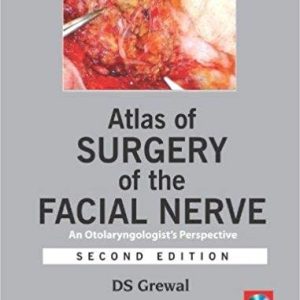Practical Reviews Opioid Prescribing Practices 2018
Target Audience
This educational activity was designed for Physicians, Nurse Practitioners, Physician Assistants, Dentists, and Oral and Maxillofacial Surgeons.
TOPICS/SPEAKER:
PART 1: Managing Opioid Therapy in High-Risk Patients
PART 2: Opioid Epidemic
$12.99
Description
Upon completion of this activity, the participant will be able to:
Define the terms “pain” and “chronic pain.”
Provide examples of potential high-risk patients for opioid misuse based on the following 3 areas: family history, personal history/behavior, and environmental factors.
Describe how a health care provider might assess a patient’s chronic pain and measure the outcomes after initiating treatment.
Discuss the value of physical therapy and relaxation therapy in the management of chronic pain.
List at least five non-opioid drugs that may offer first-line therapy for non-cancerrelated pain management.
Summarize the Centers for Disease Control’s (CDC) guidelines that pertain to proper prescribing practice for pain medications.
Discuss the paradox of using opioids to treat patients whose chronic pain has been successfully managed with long-term opioids up to this time.
State whether the incidence of providers actually losing their license or having any legal action taken against them regarding opioid prescribing practices is large or small.
Describe Prescription Drug Monitoring Programs and discuss their use in the prescribing of opioid medications.
Discuss how the smartphone app called the Brigham and Women’s Hospital Pain App can be used as part of a patient’s chronic pain management program.
Differentiate between acute and chronic pain.
Recall from memory important statistics about the number of deaths due to drug overdose in the U.S. and how this relates to the number of people lost in 911 and the number of soldier killed in the Vietnam War.
Summarize at least 3 steps that providers can take to reduce the opioid epidemic.
List some nonopioid alternatives to managing mild pain, moderate to severe pain, and severe pain.
Discuss the impact that new federal and state regulations on opioid prescribing practices is having on prescription-related overdoses and provider prescribing practices.
Describe at least 4 topics that providers must discuss in detail with their patients before giving them a postoperative prescription for opioid pain medications.
List at least 3 common opioid-related side effects.
Differentiate between the addictive potential of Schedule I, Schedule II, Schedule III, Schedule IV, and Schedule V narcotics.
Summarize the discrepancy between addiction treatment versus other diseases as it relates to access to care.
Additional information
Showing 1–12 of 1359 results
-
Sale!

Re-Visioning Family Therapy: Addressing Diversity in Clinical Practice, 3rd edition
$12.99 Add to cart -

Fluoro-Flip: A Quick Reference Guide to Spinal and Peripheral Pain Procedures 1st Edition
$9.99 Add to cart -
Sale!

Psychopathology: Science and Practice 12th Edition
$15.99 Add to cart -
Sale!

The Power of Critical Thinking: Effective Reasoning About Ordinary and Extraordinary Claims, 8th Edition
$15.99 Add to cart -
Sale!

Majoring in Psychology: Achieving Your Educational and Career Goals, 3rd Edition
$15.99 Add to cart -
Sale!

Complete Psychology, 2nd Edition
$8.99 Add to cart -
Sale!

Statistics Without Maths for Psychology, 6th Edition
$10.99 Add to cart -
Sale!

Sleep and Sport: Physical Performance, Mental Performance, Injury Prevention, and Competitive Advantage for Athletes, Coaches, and Trainers
$12.99 Add to cart -
Sale!

Understanding Psychology (11th Edition) 11th Edition
$10.99 Add to cart -

Atlas of Surgery of the Facial Nerve: An Otolaryngologists Perspective 2nd Edition
$13.99 Add to cart -

Hematological Profile of Cord Blood in Infants First Edition
$8.99 Add to cart






